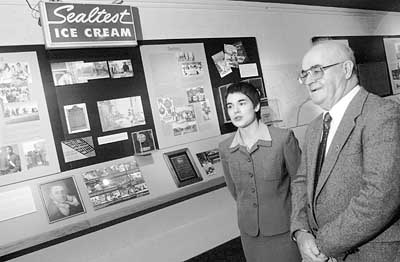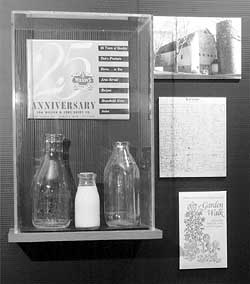
Homepage
Search
CyberSurveys
Horoscope
Lottery
Michigan's
Best
Weather
Staff

 News
Talk News
Talk
 Autos
Talk Autos
Talk
 Big 10
Talk Big 10
Talk
 High
Schools High
Schools
 Lions
Talk Lions
Talk
 Pistons
Talk Pistons
Talk
 Wings
Talk Wings
Talk
 Tech
Talk Tech
Talk
 Tiger
Talk Tiger
Talk

Autos
 Insider Insider
 Auto
Show Auto
Show
 Consumer Consumer
 Joyrides Joyrides
Business
Careers
Census
Columnists
Commuting
Detroit History
Editorials
Metro /
State
 Livingston Livingston
 Macomb Macomb
 Oakland Oakland
 Wayne Wayne
 On
Detroit On
Detroit
Nation /
World
Obituaries
 Death Notices Death Notices
Politics /
Govt.
Real
Estate
Religion
Schools
Special
Reports
Technology

Sports Home
Olympics
 Lions/NFL Lions/NFL
 Pistons/NBA Pistons/NBA
 Red
Wings/NHL Red
Wings/NHL
 Shock/WNBA Shock/WNBA
 Tigers/Baseball Tigers/Baseball
 MSU MSU
 U-M U-M
More Colleges
Golf
Guide
High Schools
Motor Sports
Outdoors
More Sports
Scoreboards

Entertainment
 Casino Guide Casino Guide
 Movie Finder Movie Finder
 TV Listings TV Listings
Crossword

Homestyle home
 Decorating Decorating
 Eats &
Drinks Eats &
Drinks
 Recipe
Box Recipe
Box
 Gardening Gardening
 Health Health
 Home
Improvement Home
Improvement
 Home
Life Home
Life
 Home
Tech Home
Tech
 Wine
Report Wine
Report

Sports
Red
Wings
Lions
Autos
Joyrides
News
History
Copyright 2002
The Detroit News.
Use of this site indicates your agreement to the Terms of Service
(updated 08/09/2001).  |

Robin Buckson / The Detroit
News
A book by
Livonia resident Gene Scott, "Detroit Beginnings: Early Villages
and Old Neighborhoods," gave Detroit Historical Museum officials
the idea for the exhibit. Jill Grannan, left, is the exhibit's
curator.
 |
Livonia traces
its origins
Museum's exhibit
showcases heritage of 11 Metro areas

By
Shanteé Woodards / The Detroit
News


Robin Buckson / The Detroit News
Items
from the Wilson Dairy are part of the exhibit. Livonia was a
farming community in the 1800s.
 | Stroll through the
past
Elm Park: The area
was north and east of city limits in 1875, an affordable
alternative to the more elaborate and elegant homes of Indian
Village to the south. It had one of the city's largest shopping
centers, including a Sears department store that was demolished by
1970. Detroit annexed Elm Park in 1891.
Forest Lawn: Named for its stately
trees, this area was a 128-acre farming community west of Van Dyke
and south of McNichols. It was annexed in 1916, and the south end
was redeveloped as part of the Chrysler Lynch Road Assembly Plant
in 1928.
Kenwood: Developed in 1891
where Highland Park and Hamtramck met. Kenwood was a stop on Grand
Trunk Railroad in 1895. After being annexed in 1907, it was
redeveloped for several industrial firms.
Maybury: The area was south of North
Detroit and east of Van Dyke. It started in 1888 and was named for
William C. Maybury, a popular congressman who became Detroit's
mayor. It was annexed in 1915.
These four
Detroit neighborhoods are among those described by Livonia author
Gene Scott in a book that inspired a museum display drawing
suburban visitors.
Source: "Detroit
Beginnings: Early Villages and Old Neighborhoods."
Connections: Metro
Detroit Neighborhoods
 The 100-foot-long
exhibit will be displayed at Alger Hall at the Detroit Historical
Museum through Sept. 1. The 100-foot-long
exhibit will be displayed at Alger Hall at the Detroit Historical
Museum through Sept. 1.
 The exhibit
features historical information about 17 Detroit neighborhoods and
11 suburban communities. The exhibit
features historical information about 17 Detroit neighborhoods and
11 suburban communities.
 The exhibit is
open Tuesday through Friday from 9:30 a.m. to 5 p.m. and 10 a.m.
to 5 p.m. Saturday and Sunday. Admission is $5 for adults, $3 for
college students and $2.50 for students and seniors. Wednesdays
are free. The exhibit is
open Tuesday through Friday from 9:30 a.m. to 5 p.m. and 10 a.m.
to 5 p.m. Saturday and Sunday. Admission is $5 for adults, $3 for
college students and $2.50 for students and seniors. Wednesdays
are free.
 The exhibit is based on Gene Scott's book,
"Detroit Beginnings: Early Villages and Old Neighborhoods." To
order the book, send a $12 check or money order to Gene Scott,
8861 Utah, Livonia, MI 48150 The exhibit is based on Gene Scott's book,
"Detroit Beginnings: Early Villages and Old Neighborhoods." To
order the book, send a $12 check or money order to Gene Scott,
8861 Utah, Livonia, MI 48150
 Source: Detroit
Historical Museum Source: Detroit
Historical Museum

 Comment on this story Comment on this story
 Send this story
to a friend Send this story
to a friend
 Get Home Delivery Get Home Delivery
 | LIVONIA
-- The history of Livonia, once known as the cheese capital of Michigan,
stretches into the 1800s, even though the community has only celebrated
52 years as a city.
Livonia Township was
established in 1835, but settlers began arriving 11 years before. The
area was a farming community and in the 1870s had three cheese
factories. The City of Livonia was born in 1950.
"Just because people didn't know about Livonia
doesn't mean we didn't exist," said Sue Daniel, chairwoman of the
Livonia Historical Commission.
The story of
Livonia's beginning is condensed and woven into an exhibit that also
features 10 other suburban communities in Wayne, Oakland and Macomb
counties and 17 Detroit neighborhoods.
The
exhibit, "Connections: Metro Detroit Neighborhoods," is on display at
the Detroit Historical Museum through next year.
The 100-foot display has vignettes about each
community and pictures, maps and artifacts donated by area museums and
historical societies. The exhibit will run through Sept. 1. There have
been informal discussions about donating portions of the exhibit to the
featured communities when the display it is over.
Members of the Plymouth Historical Museum plan to
visit the exhibit next month. Beth Stewart, director of the Plymouth
museum, said she is excited about the possibility of having Plymouth's
portion of the exhibit displayed in Plymouth.
"It
will be a way for little people like us to get a professionally designed
exhibit," Stewart said. "The opportunity for it to end up permanently in
our back yard is a great plan."
Organizers said
the exhibit is a way of showing Metro Detroiters how they're all related
and why they should move past issues that pit Detroit and the suburbs
against each other. At a time when several suburbs are fighting the
Detroit Water and Sewerage Department, the exhibit is a welcomed break,
said Jill Grannan, curator of the exhibit.
"We
still obviously suffer from an inferiority complex in Detroit," said
Grannan, curator of the exhibit at the Detroit Historical Museum.
"Everybody learns something from (exhibits like this). If your town
isn't represented, you probably knew somebody nearby. There are so many
ways to show the connections."
A book by Livonia
author Gene Scott gave museum officials the idea to create the exhibit.
After working on the committee that planned
Detroit's 300th birthday celebration, Scott received a $3,000 grant
funded by the committee and Comerica Bank to research the beginnings of
some of Detroit's older neighborhoods.
The book,
"Detroit Beginnings: Early Villages and Old Neighborhoods," was
published in 2001.
The Detroit Retired City
Employees Association sponsored the book, which was distributed to 500
Metro Detroit schools and libraries. Once the Detroit Historical Museum
received its copy of the book last year, officials there decided to
expand it to an exhibit including the suburbs, Grannan said.
"It's the kind of project where after you're done,
you're still learning things," said Scott, a retired public relations
specialist for Detroit. "This is showing connections not just in
historical ways but in very geographic ways. The city and much of it's
suburbs are connected to each other."
The Plymouth
Historical Museum donated a Daisy air rifle for its portion of the
display. The rifle originated in Plymouth in 1888 as a premium given to
farmers who purchased an iron windmill from the Plymouth Iron Windmill
Company, local historians said.
Farmers eventually
became more interested in the Daisy rifles than the windmills and the
company produced 50,000 guns, according to local historians. By 1891,
the company began turning a profit by selling the guns. In 1895, the
company stopped selling windmills and changed its name to the Daisy
Manufacturing Company.
Other donated items
include:
 Pictures of the 1964 World Fair, which featured the
"World's Largest Tire" as a ferris wheel two years before it was shipped
to Allen Park on 22 truck beds. Pictures of the 1964 World Fair, which featured the
"World's Largest Tire" as a ferris wheel two years before it was shipped
to Allen Park on 22 truck beds.
 Christmas books and
catalogues from Dearborn's old Ford Rotunda, which served as the Ford
pavilion for the 1933-1934 world fair. The Rotunda burned down in 1962. Christmas books and
catalogues from Dearborn's old Ford Rotunda, which served as the Ford
pavilion for the 1933-1934 world fair. The Rotunda burned down in 1962.
 Signed boxing gloves from boxing trainer Emanuel Steward,
donated by the North Rosedale Park Players. Signed boxing gloves from boxing trainer Emanuel Steward,
donated by the North Rosedale Park Players.

You can reach Shanteé Woodards at (734) 354-4049 or mailto:swoodards@detnews.com
|

